In April the time has come again: the asparagus season begins. Here are five reasons why the royal vegetable is so unique.
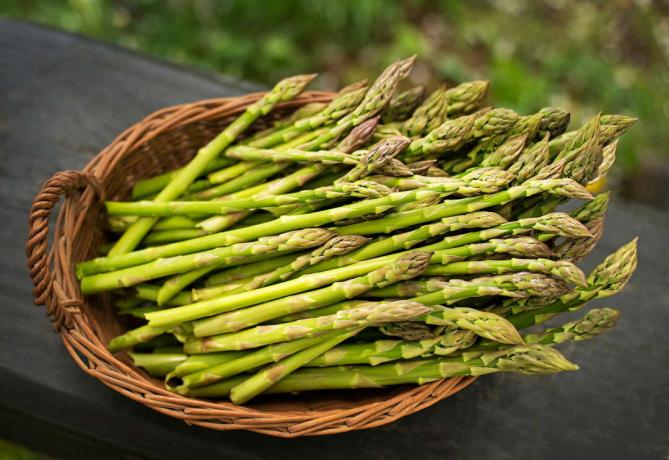
With the coming of spring and the days that are getting warmer and warmer, he dares to venture out asparagus finally to the daylight. This delicious plant has its main season with us from April to June and can also be purchased cheaply depending on the time. Once it finds its way into our shopping baskets, there are countless uses for edible ivory. Whether as a soup or as a side dish to potatoes and ham: there are no limits to asparagus.
contents
- 1. Royal vegetables
- 2. Where our asparagus comes from
- 3. The freshness test
- 4. The slim fit maker
- 5. Asparagus: a real all-rounder
1. Royal vegetables
Especially when it comes to the price. What many do not know is that despite advanced modernization in the agricultural sector, the asparagus harvest is still associated with certain difficulties. To a large extent, the pole vegetables still have to laboriously by hand
harvested will. This complex method costs time and, above all, money. The asparagus is then differently expensive depending on the time of harvest. In this case, the offer determines the price.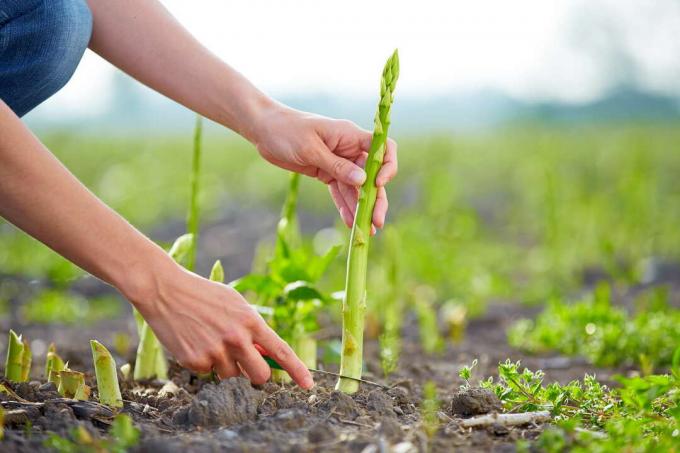
2. Where our asparagus comes from
The federal states of Lower Saxony, Bavaria and North Rhine-Westphalia are the main suppliers when it comes to German asparagus. While here the asparagus can only be harvested from April to June, there are countries and producers who benefit from their milder climate. In sunny Spain or Greece, for example, the asparagus plant can be grown as early as February stung while in countries like China or Peru it can even be harvested all year round. So if you want to enjoy your asparagus as early as possible, you have to resort to foreign exports. However, one should also bear in mind that the imported asparagus has traveled halfway around the world and therefore has a high CO2-Emission is connected.
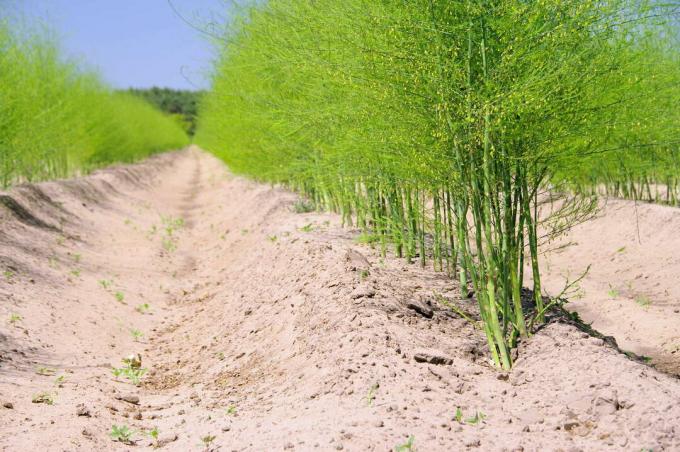
3. The freshness test
You can recognize fresh asparagus by the still closed tips and the firmness of the stick. The texture of old asparagus is rather light brown and hollow. If you are still unsure, you can rub two bars together. If they squeak and bend little, you are holding fresh goods in your hands.
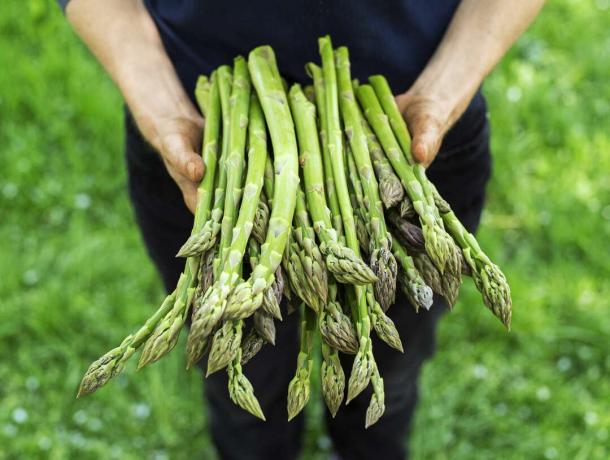
4. The slim fit maker
With only 18 kcal per 100 g is the asparagus definitely not fattening up. The plant also contains many important B vitamins that really boost the metabolism in our body. Green asparagus is sometimes even richer in nutrients than its colleague. Compared to the white sticks, its concentration of vitamins A and C is considerably higher.
by the way: While the white asparagus is pricked as soon as its head sees sunlight, its green brother spends a certain time above the ground. Photosynthesis triggered by the sun then turns the asparagus green. In theory, you could also make green asparagus from white asparagus.
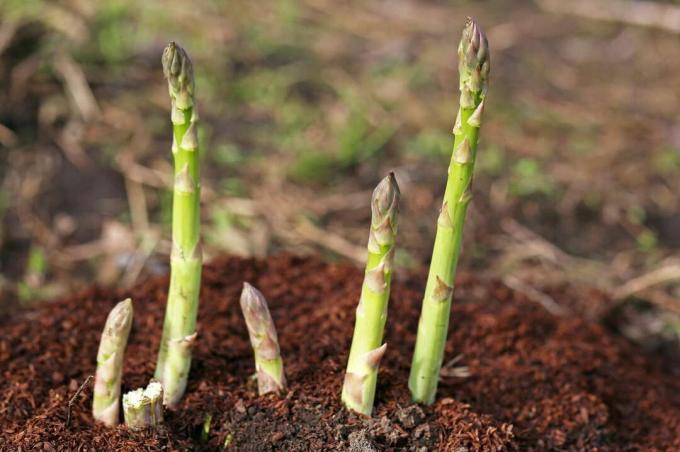
5. Asparagus: a real all-rounder
White asparagus should always be peeled before preparation. Green asparagus, on the other hand, is less complicated and only needs to be peeled off at the bottom. One of the best-known recipe variations is probably asparagus with potatoes and the delicious hollandaise sauce. The delicious sticks can also be prepared in a more unconventional way, for example breaded, in a casserole or on a tarte flambée. The asparagus is also a real team player, especially in salads. Whether it's more classic with herbs and spring onions or a bit more summery, for example in combination with strawberries: the fine taste of the vegetables goes well with almost everything. However, caution is advised: due to the purines it contains, asparagus should only be eaten in moderation if you have known kidney problems.

If you are now interested in growing the delicious asparagus yourself, you will find helpful tips here Growing asparagus.


